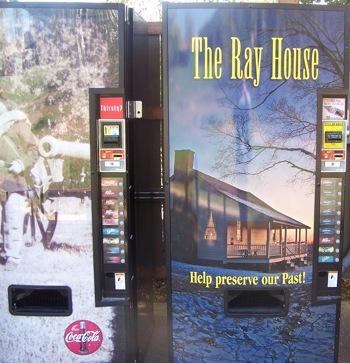If nothing else, last week's Leadership Summit on Partnership and Philanthropy hosted by the National Park Foundation demonstrated that some major corporations want to support the national parks. The nagging question that lingers, though, is to what extent?
I ask that question in the context of that memorable line voiced by Phoebe Buffay-Hannigan (better known in real life as Lisa Kudrow) during an episode of the Friends television show: "There is no selfless good deed," or something to that effect.
The slippery slope of giving large sums of money to the national parks is how do you thank those who give? Us small fish, who give $50 here and $100 there a year to park friends groups, are happy enough to see our names listed under one of the various dollar categories in those end-of-the-year financial reports.
But there are concerns, justified or not, that corporations that hand over millions, or tens of millions, of dollars will want some sort of recognition tying them to the parks of their choice.
During the conference I lost count of the number of speakers (one was none other than Treasury Secretary Henry Paulson, late of Goldman Sachs) who said corporations were not interested in being memorialized in some fashion within the parks for giving to the parks.
"There's no corporation that would want that, because they know that would be a negative," said Mr. Paulson. "People want to participate today, and that's the biggest reasons companies are going to want to give."
Perhaps. But there must be some bottom line some of these corporations are chasing.
"We feel the national parks are a very large opportunity for our company and other companies out there," said Brian Kelley, the president and general manager of "still beverages" for Coca-Cola North America.
OK, that's better, but he didn't elaborate and managed to vanish before I could get him to explain.
Mr. Kelley later said that something the Interior Department can learn from the private sector is the importance of branding its products; in this case, the national parks. (Perhaps if that had been done years ago the Park Service would be pulling in royalties from the automakers who tag some of their rigs "Sequoia" and "Acadia.")
And then there was John Rice, the retired president of Unilever Americas, who in one breath said giving to the parks is "the right thing to do for our employees and our company, and it's the right thing to do for our business," and a few moments later singled out sections 6, 7 and 10 of Director's Order 21, which pertains to donations and fundraising for the parks, as sections he doesn't like.
Those sections, by the way, focus on considering and accepting donations, corporate campaigns to raise funds for the parks, and how those donors are recognized in and out of the parks.
The devil's advocate, however, might say this is (to borrow from Willy Shakespeare) all sound and fury signifying nothing. After all, Coke already is highly visible in the parks via its cans and bottles and doesn't have to pay a cent to the Park Service for that exposure, as are countless brands of beer and bottled water, not to mention USA Today and the other newspapers in racks.
Last week's conference was, in essence, a germination tank. It was designed and intended to sprout ideas that the National Park Foundation could leverage into more dollars for the national parks. Later this winter the foundation is expected to have a smaller retreat to sift through these ideas and pluck the most promising.
Hopefully, there will be some good ones that succeed. But there will have to be oversight and some controls put in place so the parks aren't branded by the corporations. And if last week's speakers were sincere, that shouldn't be a problem.
Beyond that, though, Congress needs to step up to its responsibility and make a meaningful investment in the park system. And by meaningful, I don't mean by simply passing the Centennial Initiative as drafted, or even with a few extra million dollars tossed in. Let's not overlook that the Centennial Initiative, as it left the president's office, is a shadow of what Mr. Bush proposed for the parks when he was campaigning back in 2000.
And, as Anne and David Whisnant so carefully pointed out back in April, the proposed $3 billion initiative pales when held up against the Mission 66 program of five decades ago.
No, we need Congress to raise the ante on this president, and the next, and the next if necessary. We need Congress to promise at least $10 billion for the parks over the next decade just so the maintenance backlog alone can be erased. And then we need to get the Park Service off life support by providing meaningful budgets, by having the agency conduct 360 assessments from top to bottom, and by assessing the entire 391-unit system, unit by unit if necessary, to determine how best to once again make it the world leader in the national parks movement.




Comments
Here's how I see it:
1. The National Park Service (and the government in general) established a legacy of mismanaging funds, which ticked a lot of people off (remember the outhouses which cost the taxpayers hundreds of thousands?).
2. The taxpayers finally got savvy to the fact that the NPS really isn't a bunch of altruistic Dudley Do-Rights.
3. For this and other reasons, money was taken from the NPS, thereby enabling the corporations to make more.
4. Now that the NPS can't take care of itself (lack of adequate funding coupled with continued mismanagement), the agency has to go begging to the corporations for its money back.
5. This has made the problem worse, because begging for money takes even more time and costs even more money... and is therefore even more inefficient.
6. Plus, once we get the money, there will be strings attached!